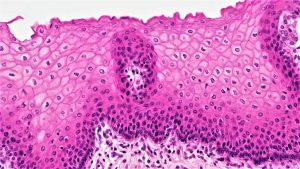Muscle tissue is able to contract and become shorter and fatter.
Tense your bicep, what you’ll notice is the muscle bulging when you contract it.

- Every muscle cell is able to contract, but you need thousands of them to move your body parts.
- While muscles can contract they can’t expand. So they need another muscle to pull them back. Your bicep pulls your arm up while your tricep pulls it down.
Epithelium cells makes up your skin and organs. These cells make up the outside and inside of your body, going all around your body, mouth, stomach etc…

Connective tissue connects, supports, binds, or separates other tissues or organs.
Fat, bone cartilage, ligament and tendons are examples of connective tissues.
They can be strong and fibrous like ligaments, which hold your bones together. Tendons connect your muscles and bone together.

Nerve tissue sends electrical signals around the body. You brain is made up of nerve tissue.
When you want to move your muscle an electrical impulse travels from the brain, down the spine and to the muscle.


 Add to favourites
Add to favourites